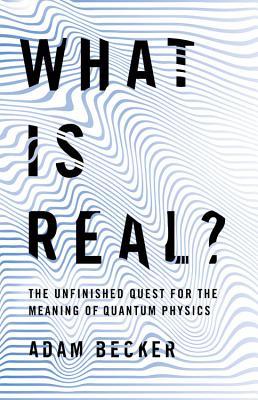
In Search of Schrödinger's Cat: Quantum Physics and Reality
Book Description
What if reality is not what it seems? Step into the bewildering world of quantum physics, where particles exist in a dance of probabilities and the very fabric of existence hangs in the balance. John Gribbin takes readers on a thrilling journey, unraveling the mysteries of Schrödinger's famous cat and the bizarre principles that govern the universe. Each page crackles with the tension between science and philosophy, challenging everything thought to be true. Can the secrets of the cosmos unlock the door to a deeper understanding of our world? Dive into this mind-bending exploration and ask yourself: what truly lies beneath the surface of reality?
Quick Book Summary
"In Search of Schrödinger's Cat" by John Gribbin demystifies the bizarre world of quantum physics for general readers. The book explores the paradoxes and revolutionary discoveries at the heart of quantum mechanics, such as wave-particle duality, uncertainty, and superposition. Using Schrödinger's famous cat thought experiment, Gribbin illustrates the philosophical and scientific challenges posed by quantum reality. He skillfully blends history, biography, and scientific explanation, tracing the evolution of quantum theory through the contributions of pioneers like Einstein, Bohr, and Heisenberg. Ultimately, Gribbin highlights the struggle to reconcile quantum theory's strange predictions with our perception of reality, inviting readers to question the nature of existence itself.
Summary of Key Ideas
Table of Contents
The Foundations of Quantum Theory
John Gribbin introduces readers to the birth of quantum physics, explaining how classical physics struggled to account for the behavior of light and matter at the smallest scales. The narrative begins with foundational experiments such as the double slit and the photoelectric effect, which forced scientists to abandon intuitive notions of particles and waves. Gribbin profiles early pioneers like Max Planck, who first introduced the quantum concept, and Albert Einstein, whose explanation of the photoelectric effect cemented the idea that light can behave as both a wave and a particle.
Wave-Particle Duality and Uncertainty
The heart of quantum mechanics revolves around the bewildering realization that particles such as electrons and photons don't have definite properties until they're observed. Gribbin explains Heisenberg's uncertainty principle and the notion of superposition, where particles exist across multiple possibilities simultaneously. Wave-particle duality is unraveled through examples and experiments, showing how the act of measurement collapses a particle's probabilistic wave function into a single reality. These fundamental principles challenge our everyday understanding of determinism and locality.
The Schrödinger's Cat Paradox
A major focus is the Schrödinger's cat thought experiment, which Gribbin uses as a lens to explore the unresolved mysteries of quantum reality. The scenario, where a cat is both alive and dead until observed, encapsulates the weirdness of quantum superposition when applied to everyday objects. Gribbin delves into various interpretations, from the Copenhagen interpretation’s emphasis on observation to the Many Worlds theory, which posits countless branching realities. Each approach tries to explain how an indeterminate quantum world produces definite outcomes we perceive macroscopically.
Interpretations and Philosophical Implications
Gribbin doesn't shy away from the philosophical debates that quantum mechanics has sparked. He explores the tensions between Einstein and Bohr, with Einstein's famous objections to quantum unpredictability and Bohr’s defense of the primacy of observation. Gribbin examines how quantum theory forces us to reconsider the nature of reality, causality, and objectivity, drawing from both science and philosophy. The discussion of quantum entanglement and nonlocality further blurs the boundary between scientific discovery and metaphysical speculation.
The Continuing Quest to Understand Reality
In the concluding chapters, Gribbin surveys later developments and unsolved problems, such as quantum decoherence and efforts to unify quantum mechanics with general relativity. He highlights how ongoing experiments continue to vindicate quantum predictions, yet a complete understanding remains elusive. Gribbin closes by emphasizing the tension between quantum theory’s mathematical success and philosophical discomfort, inviting readers to embrace uncertainty and marvel at a universe far stranger than we can imagine.
Download This Summary
Get a free PDF of this summary instantly — no email required.





